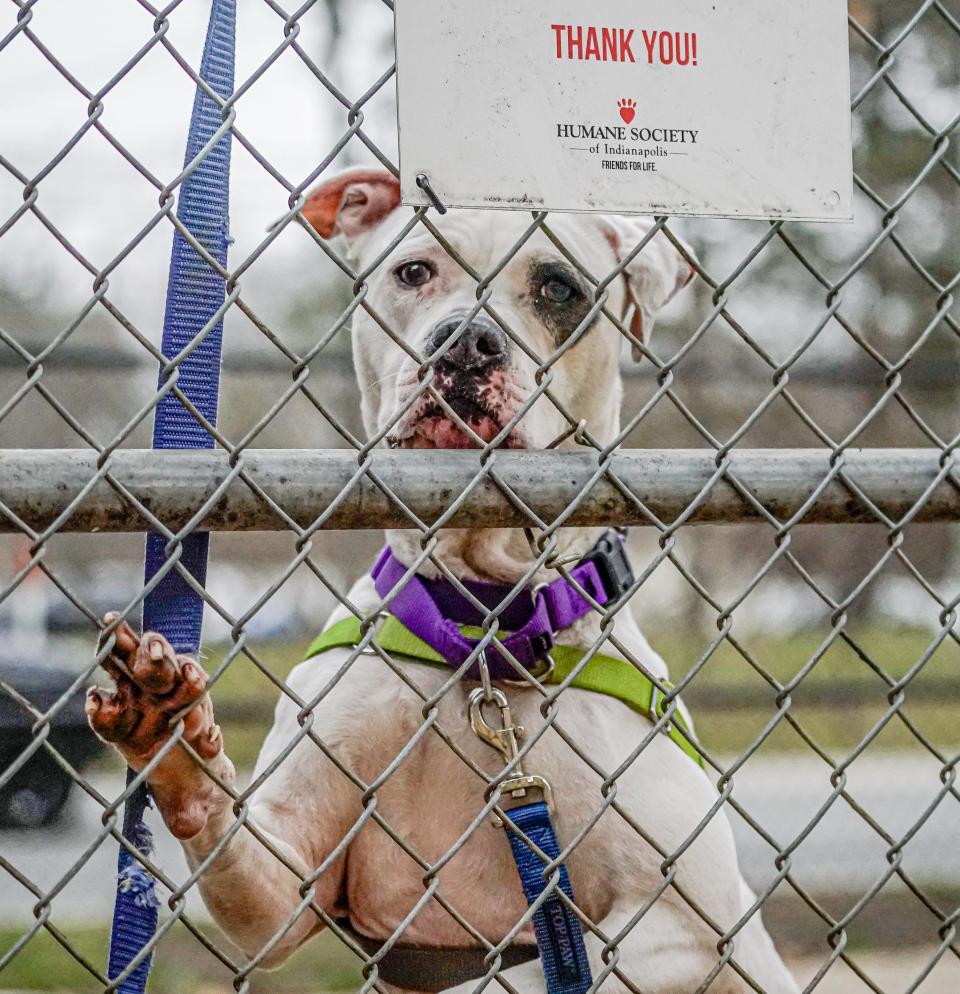Jun. 5—Turnover among New Mexico’s child protective services workers outstrips the national average and is more than double the level considered optimal.
Some kids in the custody of the New Mexico Children, Youth and Families Department are sleeping at agency offices — sometimes for weeks — because of a lack of other options.
Advocates are raising concerns CYFD workers looking for signs of willful child neglect are penalizing families for poverty — and in the process taking up bandwidth badly needed for children suffering true abuse and neglect.
Meanwhile, a child abuse pediatrician said, the number of children hospitalized because of drug exposure appears to be on the rise, along with housing insecurity.
State analysts and advocates painted a grim picture of New Mexico’s sprawling child welfare system before members of the Legislative Health and Human Services Committee on Wednesday.
The wide-ranging testimony, which kicked off the committee’s three-day deep dive into the topic, set the table for CYFD Secretary Teresa Casados, who is scheduled to give a comprehensive update on the agency Thursday afternoon. It also gave state lawmakers a chance to air concerns about the agency’ lack of progress and failure to spend millions of dollars in recent years.
“We keep increasing the funding and there’s no implementation. It’s really frustrating,” said Rep. Liz Thomson, D-Albuquerque. “… Getting the money, we thought at least, was the hard part … and we do that only to find out that it’s just a waste.”
CYFD challenges
The child welfare agency’s troubles are nothing new — a well-documented backlog of investigations, struggles to retain staff and a dearth of homes for foster children have long been thorns in the agency’s side.
Nathan Eckberg, a senior fiscal analyst for the Legislative Finance Committee, told lawmakers high turnover for child welfare workers isn’t unique to New Mexico. But turnover among child protective services workers is hovering around 32% this year, compared to about 30% nationally — still far higher than the 12% considered healthy in the industry.
That’s despite the state making some progress in lowering staggering caseloads for workers, Eckberg said.
While the rate of children and youth in CYFD custody is down slightly from 2019 and lower than the national rate, there are about twice as many children in foster care as there are homes for them, he said.
That was a need outlined several years ago in the settlement of a landmark class-action lawsuit known as Kevin S., brought against CYFD and the New Mexico Human Services Department by a group of foster children, Eckberg said.
“With 2,000 children in foster care, we only have roughly 1,000 resource homes in total, including relative placements,” Eckberg said. “… That’s definitely one thing to keep an eye on.”
That mismatch forces some tough decisions, said Veronica Montaño-Pilch, executive director of the New Mexico CASA Association. She confirmed there are some children sleeping at CYFD offices.
Montaño-Pilch, whose organization advocates for foster children and for their families, cited one girl who she said has been sleeping in an office for the past eight weeks.
“It’s a problem,” Montaño-Pilch said. “It hasn’t gone away. … It seems like we should be able to do something about it, but what? Why are there kids in the offices? Because there aren’t any places for them.”
Rachel Mercer-Garcia, a principal analyst for the Legislative Finance Committee, said New Mexico is “under-leveraging” available federal funds. She pointed to the federal Families First Prevention Services Act, passed in 2018 with a goal of expanding prevention and intervention services to stave off the need to formally involve families in the child welfare system.
Most states have submitted plans and gained eligibility for funding through the act — but New Mexico’s wasn’t accepted.
“We are now one of five states with plans that have not been approved,” Mercer-Garcia said.
That doesn’t mean CYFD is underfunded — at least at the level the department can handle. In fact, the state increased significantly increased its budget for several years in a row recently, only to have large portions go unspent, Mercer-Garcia said.
“Funding is no longer the main barrier to these programs,” Eckburg said. “It’s mostly implementation issues.”
Neglect or poverty?
Some advocates told lawmakers they believe another factor is at play in CYFD’s ineffectiveness: A tendency for investigators to conflate neglect with poverty.
Joanna DeLaney, a youth leader with New Mexico Child Advocacy Networks who spent time in foster care, said neglect involves parents choosing not to feed or care for their children, not parents who are working at it.
The problem, she said, is when an investigator jumps to the conclusion there’s neglect, removes children from the home and puts them into foster care.
“Then they pay foster families to take care of the kids, rather than putting resources into those parents’ homes right where they are so they don’t have to have removal,” DeLaney said.
The result is heavy caseloads for CYFD workers and less time on serious cases of abuse and neglect, she said.
Mia Calle, another youth leader for the organization, said the dynamic breeds distrust in child welfare workers.
“I would lie to investigators when they would show up … to protect my family because I knew my family was doing the best that they could at the time,” Calle said.
New Mexico Child Advocacy Networks is urging the state to clarify definitions of neglect in the Children’s Code.
Dangerous drug exposure
As stubborn as CYFD’s problems are, they’re not the only factor at play — there’s evidence that New Mexico children are being exposed to more dangers by way of substances at home and out in the community.
Dr. Leslie Strickler, one of only two child abuse pediatricians in the state and the medical director of the University of New Mexico’s Child Abuse Response Team, said her team is seeing more children coming into the hospital seriously ill because of exposure to drugs and alcohol.
“We’ve seen a dramatic increase of exposure to marijuana in children with recreational use and legalization and an explosion of edibles,” Strickler said. “Because these are not medications to children, they are candies and they are cookies.”
Even more troubling is the increase in young children exposed to fentanyl, she said.
“If someone had asked me 10 years ago if I would anticipate that fentanyl would be a problem that I would encounter as a child abuse pediatrician, I would have laughed,” Strickler said, adding in years past the drug was only used in the hospital setting for the sickest patients.
Strickler said when fentanyl, now the most prominently abused opiate, first started hitting the streets and affecting children, doctors sometimes missed the signs.
Adults exposed to opiates typically have the same symptoms: They get tired, they stop being able to breathe effectively, their pupils get small. But infants and children often go into cardiac arrest.
“It’s very challenging for front-line responders … to recognize this, particularly if the history is not clear,” Strickler said. “We’re losing kids as a result at similar rates, I think, that we’re losing adults.”
Signup bonus from





